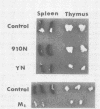Abstract
Intracerebral inoculation of the YN strain of parainfluenza 3 virus was found to induce an acute fatal illness characterized by marked thymic and splenic atrophy in newborn mice. Previously we showed that the YN strain contains three distinct plaque-type variants, LT, SC, and M. Of these, the M-type variant induced this fatal illness, whereas the other two variants induced hydrocephalus.
Full text
PDF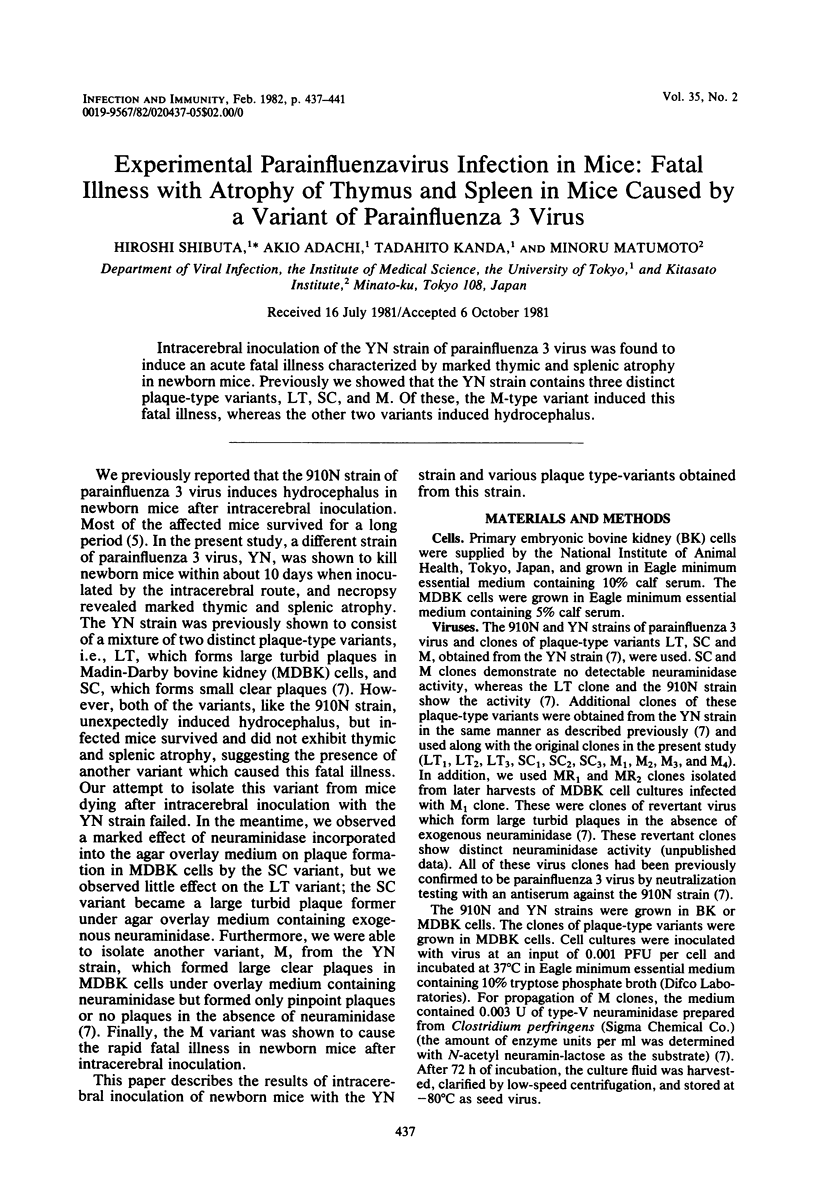
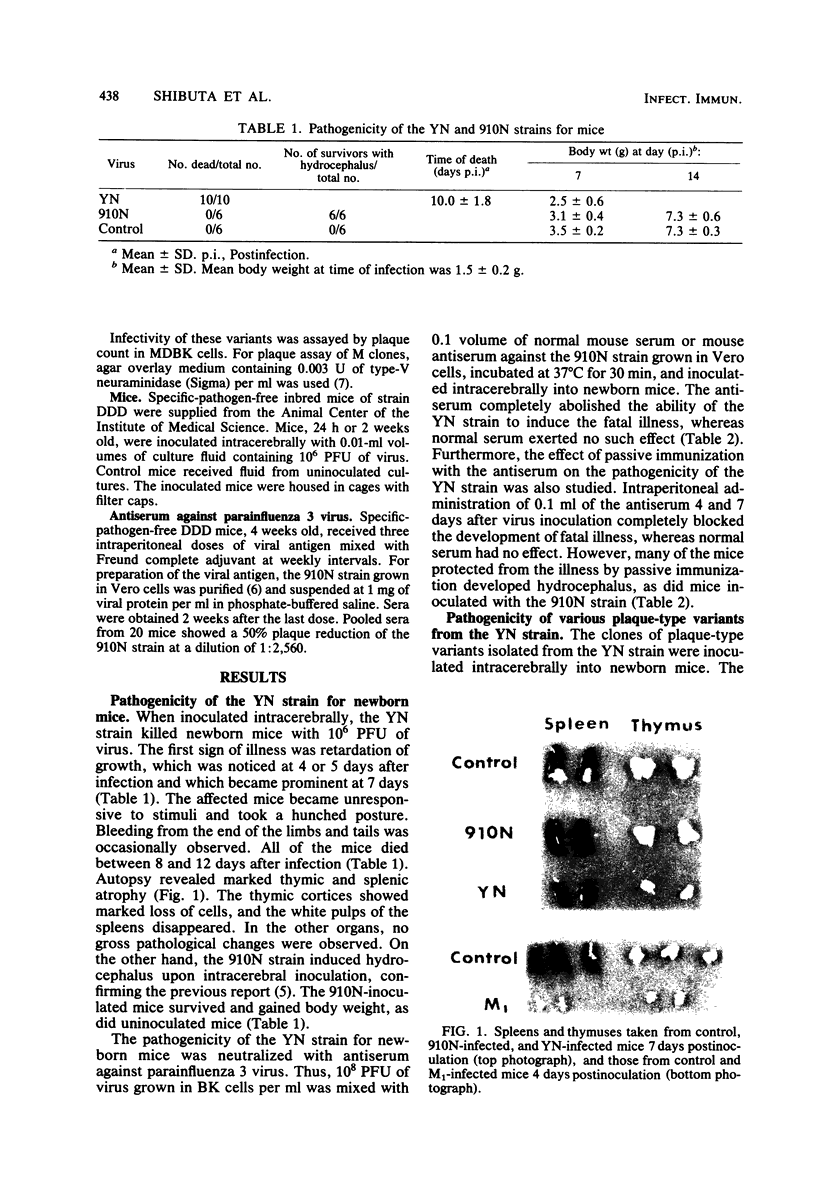

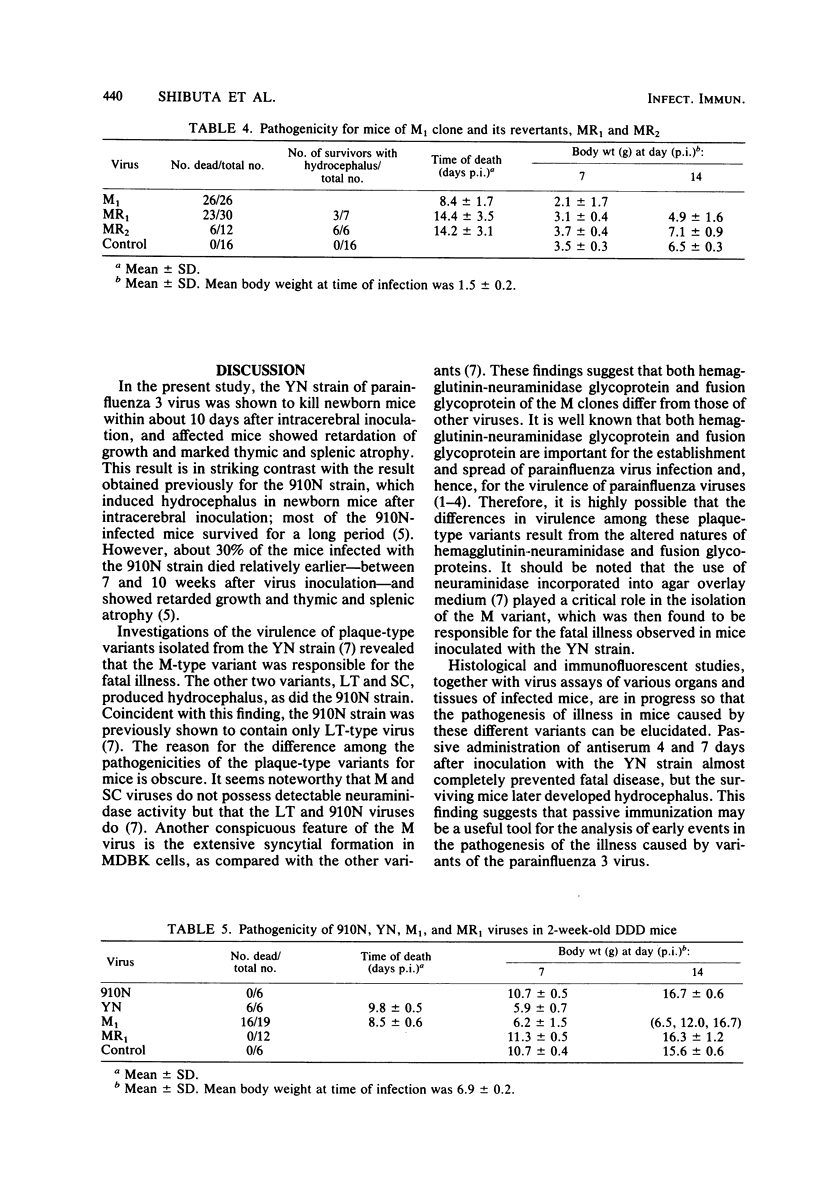
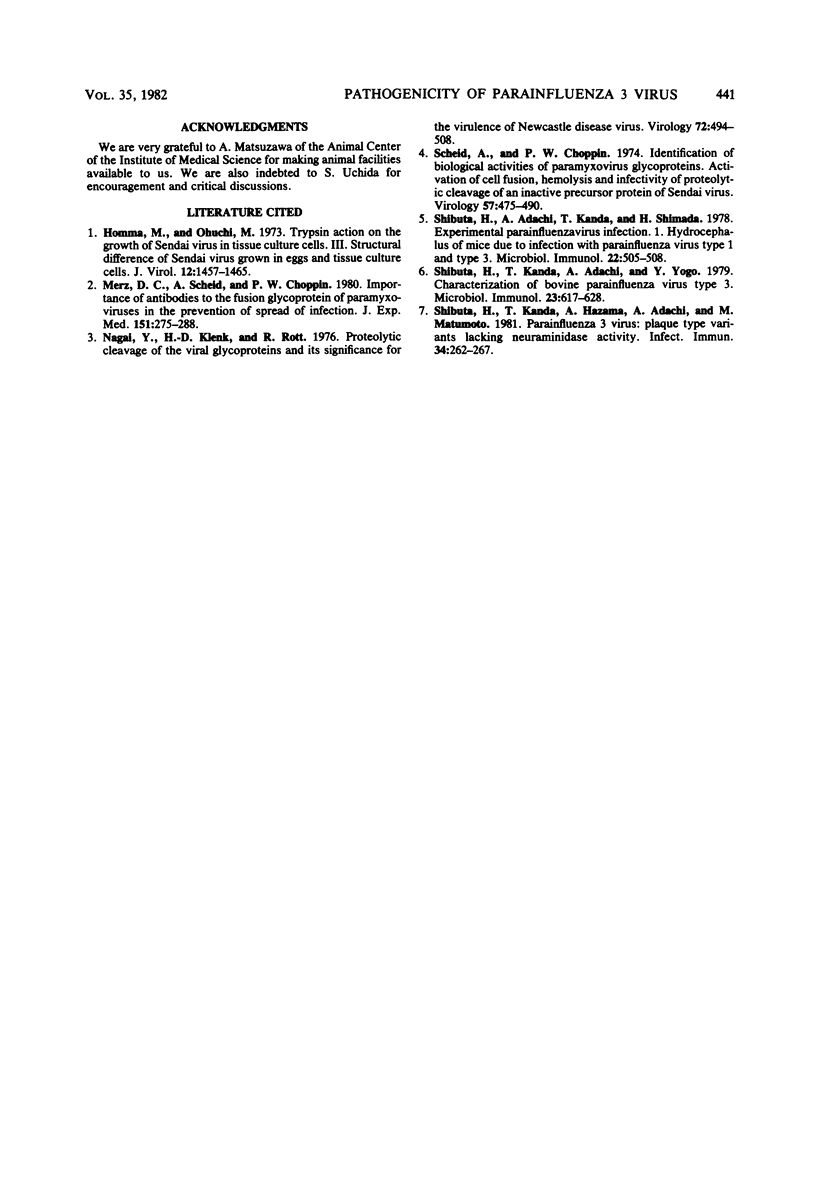
Images in this article
Selected References
These references are in PubMed. This may not be the complete list of references from this article.
- Homma M., Ouchi M. Trypsin action on the growth of Sendai virus in tissue culture cells. 3. Structural difference of Sendai viruses grown in eggs and tissue culture cells. J Virol. 1973 Dec;12(6):1457–1465. doi: 10.1128/jvi.12.6.1457-1465.1973. [DOI] [PMC free article] [PubMed] [Google Scholar]
- Merz D. C., Scheid A., Choppin P. W. Importance of antibodies to the fusion glycoprotein of paramyxoviruses in the prevention of spread of infection. J Exp Med. 1980 Feb 1;151(2):275–288. doi: 10.1084/jem.151.2.275. [DOI] [PMC free article] [PubMed] [Google Scholar]
- Nagai Y., Klenk H. D., Rott R. Proteolytic cleavage of the viral glycoproteins and its significance for the virulence of Newcastle disease virus. Virology. 1976 Jul 15;72(2):494–508. doi: 10.1016/0042-6822(76)90178-1. [DOI] [PubMed] [Google Scholar]
- Scheid A., Choppin P. W. Identification of biological activities of paramyxovirus glycoproteins. Activation of cell fusion, hemolysis, and infectivity of proteolytic cleavage of an inactive precursor protein of Sendai virus. Virology. 1974 Feb;57(2):475–490. doi: 10.1016/0042-6822(74)90187-1. [DOI] [PubMed] [Google Scholar]
- Shibuta H., Adachi A., Kanda T., Shimada H. Experimental parainfluenzavirus infection. 1. Hydrocephalus of mice due to infection with parainfluenza virus type 1 and type 3. Microbiol Immunol. 1978;22(8):505–508. doi: 10.1111/j.1348-0421.1978.tb00397.x. [DOI] [PubMed] [Google Scholar]
- Shibuta H., Kanda T., Adachi A., Yogo Y. Characterization of bovine parainfluenza virus type 3. Microbiol Immunol. 1979;23(7):617–628. doi: 10.1111/j.1348-0421.1979.tb00502.x. [DOI] [PMC free article] [PubMed] [Google Scholar]
- Shibuta H., Kanda T., Hazama A., Adachi A., Matumoto M. Parainfluenza 3 virus: plaque-type variants lacking neuraminidase activity. Infect Immun. 1981 Oct;34(1):262–267. doi: 10.1128/iai.34.1.262-267.1981. [DOI] [PMC free article] [PubMed] [Google Scholar]



